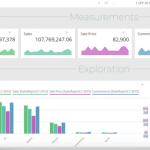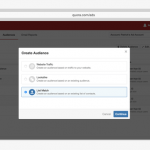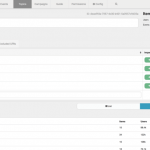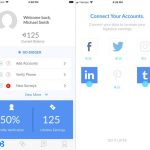mParticle launches a second-party data marketplace
A kind of ‘universal API’ so brands can send their data to 150 tools, mParticle is now allowing brands to share their audience data.
mParticle provides a connection platform so that a brand can transmit its data directly to 150 or so marketing and analytical tools, instead of setting up a separate integration for each one.
Today, the company is announcing that it is launching what is, in effect, an environment for the exchange of second-party data, by allowing brands to share audience data among themselves. Previously, brands only sent their data to tools.
CEO and co-founder Michael Katz told me that, to his knowledge, this is the first such environment for second-party mobile data. Most of mParticle’s data is mobile, although the participating brands could share any kind of audience data.
Previously, Brand A could only send a segment list of its registered customers’ relevant information through mParticle for its own targeted advertising on Facebook and other platforms.
Now, Brand A might decide it wants to target, say, all of Brand B’s customers in the New York City area with ads on Facebook. Brand B creates a segment of New York City area customers and sends it to mParticle.
mParticle then sends the minimal customer information needed to fulfill Brand B’s campaign — such as email addresses for an email campaign or mobile device IDs for a mobile ad campaign — to the email service provider or mobile ad platform in mParticle’s ecosystem. Brand B then sends its ads or marketing material to the service provider or platform, and never sees Brand A’s customers directly.
The mParticle platform doesn’t offer any special capabilities for setting prices, conditions or licenses for such data sharing, all of which involve the sharing of identified and first-party customers. Each brand makes its own deal outside of mParticle.
First-party data is a brand’s own customers, and second-party data is the name for first-party audiences that have been shared, traded or sold to another company.
mParticle is describing this new brand-to-brand exchange as “peer-to-peer (P2P) audience sharing,” although I find “peer-to-peer” misleading.
Peer-to-peer usually refers to a distributed networking architecture where workloads are shared without central servers. Distributed music file-sharing service Napster, for instance, was P2P.
In this case, though, the mParticle structure is not distributed, and mParticle plays a central role. Katz said that the name of the new service refers to the fact that Brand A and Brand B are peers because they are both brands, although they may be different sizes or offer entirely different products or services. Additionally, mParticle is here acting as a kind of data management platform, so it’s not really brand-directly-to-brand.
This new offering is another in mParticle’s efforts to broaden its capabilities. In February, it announced an open-source software development kit (SDK) for TV programming apps (like HBO Now or Sony’s Crackle) on over-the-top (OTT) devices like the Roku streaming TV platform.
That SDK allows the app to capture user activity and combine it with customer data for use on more than a hundred ad, marketing and analytics tools.
Marketing Land – Internet Marketing News, Strategies & Tips
(34)














